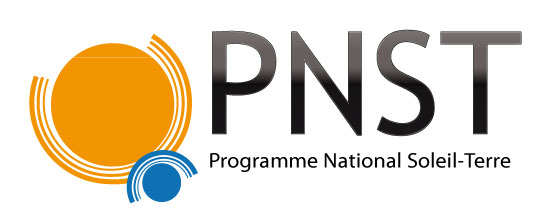Projects
Following SoHO, Wind and ACE, the STEREO mission has stimulated combined in situ and remote sensing measurements of the Sun-Earth system. Ground-based instruments observing the Sun and the terrestrial ionosphere have also been included in these studies, which exemplify a new research approach currently developed at PNST. Such an approach is important for future missions such as Solar Orbiter. This mission will provide high spatial resolution imaging as well as in situ measurements close to the Sun (0.28 AU) followed by off-ecliptic observations (in the extended phase of the mission). On the other hand, during many years, PNST activities on planetary environments have been focusing on planet Earth. An evolution toward other ionized environments is now perceptible, initiated several years ago with the Galileo mission at Jupiter and the Cassini mission at Saturn. The future Bepi Colombo mission (ESA) to Mercury will allow two-spacecraft observations of an environment widely different from that of Earth, in particular with distinct boundary conditions. PNST teams are also involved in MAVEN (NASA) for analysis of the high-altitude martian atmosphere, JUNO (NASA) for analysis of Jupiter's auroral zone, or JUICE (ESA) for analysis of the jovian mangetosphere and the Europa and Ganymede satellites. Also, the TARANIS mission (CNES) is dedicated to studies of impulsive energy transfer between the high-altitude terrestrial atmosphere and the ionosphere.
Development of space-borned instruments for both international and national missions is a strong priority at PNST, and it accounts for a fairly large fraction of laboratory activites. On the ground-based instrument side, PNST is strongly involved in four instruments : (1) SuperDARN radar network in Kerguelen Islands for studies of ionospheric convection, (ii) Nancay radio-solar instrumentation (radio-heliograph, decametric network, ORFEES spectrograph) for study of the solar corona, (iii) THEMIS telescope (Canarias Islands) for studies of the solar magnetism, (iv) EISCAT radar network for studies of the high-altitude terrestrial atmosphere, in particular for space weather. As of today, THEMIS and EISCAT are experiencing a transition phase and accessible only during limited time periods, but these instruments provide valuable measurements for key questions within PNST science. These instruments are part of coordinated european initiatives such as Solarnet and EST preparation for THEMIS, or ESFRI list for EISCAT. PNST teams also use some context observations from small instruments (e.g., CLIMSO at Pic du midi, Meudon spectro-heliogram, or neutron monitors at Kerguelen Islands), as well as instruments of general interest such as VLA, GMRT or LOFAR for radio-imaging of the Sun.
Numerical simulations play an increasing role in researches carried out within PNST. A variety of approaches (MHD, kinetic, hybrid) are used depending upon the environments that are being studied. Data assimilation is being developed as well to strengthen the link between observations and simulations.
Finally, a number of research works performed within PNST are contributing to space weather related activities. Hands-on developments with users beyond PNST teams have been carried out such as the space weather experiment FEDOME of the french Air Force. PNST is contributing to such efforts via data, models and expertise. From this viewpoint, it will be useful for both french tool visibility and ESA program success to be part of the Space Situational Awareness program and make PNST data and models available to a wide community.
